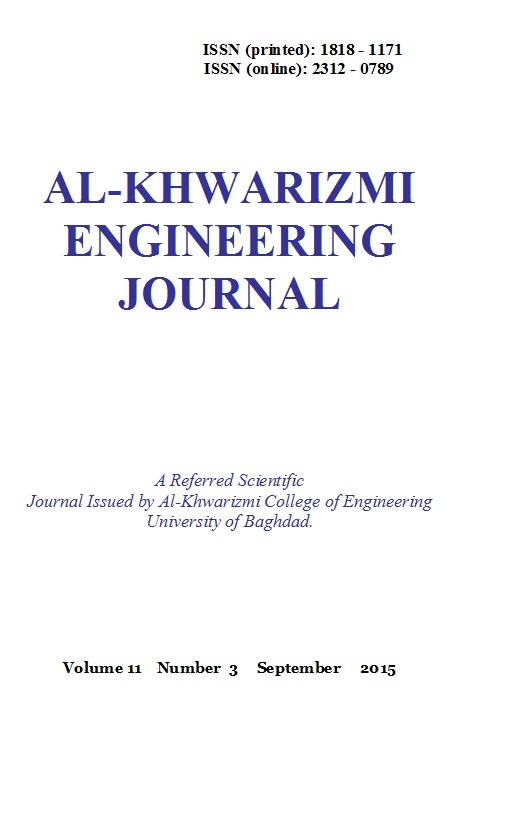The Influence of the Magnetic Abrasive Finishing System for Cylindrical Surfaces on the Surface Roughness and MRR
Keywords:
Magnetic Abrasive Finishing process, Regression model, Material Removal Rate, Surface Roughness.Abstract
Abstract
Magnetic abrasive finishing (MAF) is one of the advanced finishing processes, which produces a high level of surface quality and is primarily controlled by a magnetic field. This paper study the effect of the magnetic abrasive finishing system on the material removal rate (MRR) and surface roughness (Ra) in terms of magnetic abrasive finishing system for eight of input parameters, and three levels according to Taguchi array (L27) and using the regression model to analysis the output (results). These parameters are the (Poles geometry angle, Gap between the two magnetic poles, Grain size powder, Doze of the ferromagnetic abrasive powder, DC current, Workpiece velocity, Magnetic poles velocity, and Finishing time). This work includes the classification of the MAF system, implementation of MAF machine and magnetic poles, preparing ferromagnetic abrasive powder by mix the iron oxide with industrial diamond powder and studying the effects of magnetic abrasive finishing on the MRR and surface roughness. MINITAB software was used to estimate the influence of the Magnetic Abrasive Finishing (MAF) parameters on the MRR and Surface Roughness for a cylindrical duralumin (2024) workpiece. The results show that the poles geometry angle has the biggest influence on MRR (30.18%) followed by Finishing time, Gap, Magnetic poles velocity, Workpiece velocity, Current, Doze, and Grain size powder, respectively. Also the results show that the workpiece velocity has the biggest influence on the surface roughness (23.80%) followed by Doze, Gap, Current, poles geometry angle, Magnetic poles velocity, Grain size powder, and Finishing time, respectively. Regression results show that the decreasing of poles geometry angle from 30°to -30° leads to increasing MRR. While the decreasing of the workpiece velocity from (679 rpm) to (567 rpm) leads to increase the Roughness.
Keywords: Magnetic Abrasive Finishing process, Regression model, Material Removal Rate, Surface Roughness.
Downloads
Downloads
Published
Issue
Section
License
Copyright: Open Access authors retain the copyrights of their papers, and all open access articles are distributed under the terms of the Creative Commons Attribution License, which permits unrestricted use, distribution, and reproduction in any medium, provided that the original work is properly cited. The use of general descriptive names, trade names, trademarks, and so forth in this publication, even if not specifically identified, does not imply that these names are not protected by the relevant laws and regulations. While the advice and information in this journal are believed to be true and accurate on the date of its going to press, neither the authors, the editors, nor the publisher can accept any legal responsibility for any errors or omissions that may be made. The publisher makes no warranty, express or implied, with respect to the material contained herein.












